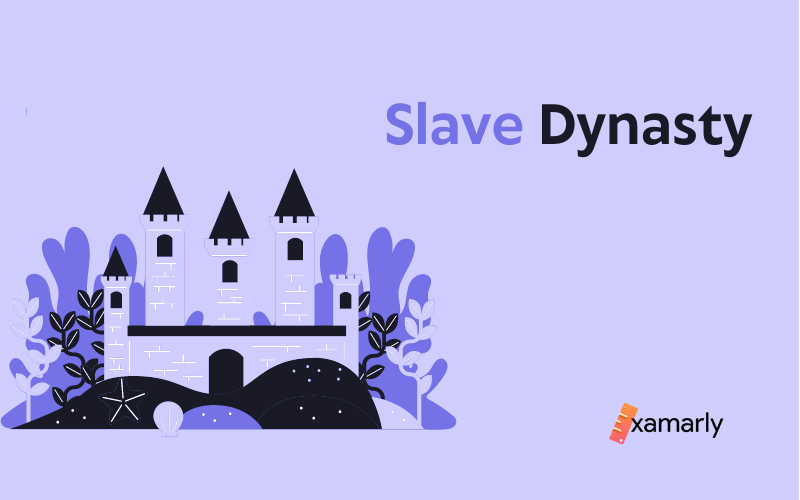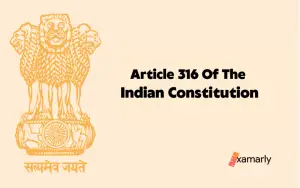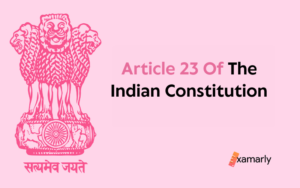Slave Dynasty is also known as the Mamluk Dynasty. This dynasty ruled in Northern India from 1206 through 1290. The Mamluk Dynasty is the first of the five powerful dynasties that ruled and constituted the Delhi Sultanate (1206-1526).
Qutub-ud-Din Aibak, a Turkic Mamluk slave general of the Central Asia, was the one who established this dynasty.
If you want to learn more about the Slave Dynasty and the Mamluks, you should check out our article on this period in Medieval Indian history.
In this article, we will discuss the history, administration, art, architecture, and culture along with the major rulers of the dynasty. If you are a UPSC aspirant, then the Mamluk Dynasty is a must-know topic. Well, for all learners, read on to know more about the Mamluk Dynasty.
This article will be beneficial for the aspirants preparing for competitive exams like UPSC Exam.
History Of Slave Dynasty
The Delhi Sultanate began with the founding of the Slave Dynasty. The dynasty was called so since its sultans were essentially slaves or slave heirs.
Slavery was an integral aspect of the political structure of eastern Muslim countries at the time. Individuals who were predominantly of Turkish descent and enslaved were trained to become loyal experts in the military and the government. These slaves were known as Mamluks.
The last ruler of the Mamluk dynasty, Muizuddin Bahram Shah, was overthrown by Jalal ud din Firuz Khilji in 1290, which marked the conclusion of the dynasty.
Let us first read about the Mamluk origins of the Slave Dynasty and then look at the introduction of the Slave Dynasty in India.
Origin Of Mamluk
A Mamluk has a slave origin and belongs to the occupational category of Muslim soldier. Mamluk means “owned,” and it relates to the Mamluks, a prominent military aristocracy. Beginning in the 9th century, the Mamluks gradually evolved into a strong military class.
The Mamluks wielded political and military authority over different areas. Even though they were slaves, their lords held them in high regard.
Many of them were trusted generals and warriors who fought for their owners. Being such a slave was considered noble. This guaranteed them access to wealth and a strong position for brilliant men who weren’t hereditarily part of the ruling elite.
In the Mamluk Sultanate, a slave was thought to be a greater asset than a son. A son may not always be skilled for all jobs, but slaves with proven talents are chosen for crucial jobs.
Slave Dynasty: Founder
Qutub-ud-Din Aibak laid the foundation of the Slave Dynasty in India. He was a favoured slave of a Muslim commander and ruler known as Muhammad Ghori.
As Muhammad’s most trusted Turkish commander, Qutub-ud-Din Aibak managed many military triumphs in the north of India.
After Muhammad Ghori was assassinated in 1206, Qutb seized authority. He successfully took down his opposition and managed to secure a stable rule for himself. Thus began the Slave Dynasty or Mamluk Dynasty.
Slave Dynasty Introduction
- The Delhi Sultanate, a Muslim nation in northern India, had its first line of kings under the Slave dynasty. Since it was ruled by a sultan, the kingdom is also known as a sultanate. From 1206 through 1290, the Slave dynasty ruled for almost a century.
- The Slave dynasty earned its name because its rulers were either slaves themselves or the offspring of enslaved individuals. The reason for the Slave dynasty’s name is that its rulers were either enslaved or born from enslaved ancestors.
- A road to wealth and a position of authority was available to gifted men whose ancestry lay outside the ruling regime by becoming highly skilled slaves.
Slave Dynasty Map

Important Slave Dynasty Rulers
Qutb al-Din Aibak established the Slave dynasty in India. He died in 1210, after laying the groundwork for an Indian Muslim kingdom.
Iltutmish, Qutb’s son-in-law, succeeded him as Sultan. Iltutmish’s first son passed away before him.
Also, he felt like the rest of his sons were not up to the mark. He wanted his daughter Raziyya to succeed him and thus he provided her with an outstanding education. When he died in 1236, she ascended to the throne.
After 1246, Ghiyas al-Din Balban ruled the empire. Further along the line, the Slave dynasty came to an end when Jalal al-Din Firuz Khalji deposed the last Slave dynasty emperor, Muiz ud din Qaiqabad, and ascended the throne in 1290.
Thus began the reign of the second dynasty – the Khiliji Dynasty.
Now, let us dive into the details of a few important rulers of the period. We will also look at the names of the other rulers of the Slave Dynasty of the Delhi Sultanate.
Qutb ud-Din Aibak
- Qutb ud-Din Aibak was a Ghurid ruler Muhammad Ghori’s Turkic general.
- He seized and invaded kingdoms like Chahamana, Gahadavala, Chaulukya, Chandela, and others. Thus, Aibak reinforced Ghurid’s dominance in northern India.
- Following the murder of Muhammad Ghori in 1206, he initiated the Delhi Sultanate by founding the Mamluk dynasty.
- After being throned as the king, Aibak concentrated on cementing his reign by stabilizing the areas already under him rather than bringing new ones under him. He was renowned for his generosity and kindness.
- During Aibak’s reign, work on the Qutb Minar in Delhi began.
- In 1210, Qutubuddin Aibak fell while playing horseback polo in Lahore and died.
Iltutmish
- Shams al-Din Iltutmish was the third Mamluk monarch to govern the Slave Dynasty.
- He was the first Muslim ruler to rule from Delhi and is hence regarded as the Delhi Sultanate’s effective founder.
- As a child, Iltutmish got sold as a slave. The Ghurid slave commander Qutb ud-Din Aibak bought him in Delhi in the late 1190s, making him a slave of a slave.
- Iltutmish came to prominence in Aibak’s service, earning the prestigious iqta of Badaun. His military achievements drew the notice of the ruler.
- Iltutmish defeated Aibak’s successor Aram Shah and established his capital in Delhi in 1211. He subsequently solidified his control by subjugating various dissidents and defeating former Ghurid slaves and other opposing rulers.
- Iltutmish oversaw a series of victories during the following years. This included the suppression of a revolt in Bengal, the conquest of Gwalior, raids on the Paramara-controlled towns of Bhilsa and Ujjain in central India, and the expulsion of Khwarazmian aides from the northwest.
- He developed the Sultanate period’s two main coins, the copper Jital, and the silver tanka, both of which had a uniform weight of 175 grains.
- He established the Iqtadari system. This was a novel sort of land distribution and administrative structure developed.
- The Qutub Minar’s building was completed under his supervision. He also constructed Delhi’s first Islamic mausoleum – Sultan Ghari.
To learn more about Iltutmish, check out the linked article.
Razia Sultana
- Razia Sultana was the first woman Muslim ruler.
- Razia, the daughter of Mamluk Sultan Shamsuddin Iltutmish, ruled Delhi from 1231 to 1232 while her father was engaged in the Gwalior expedition. After returning to Delhi, Iltutmish named Razia as his heir apparent.
- Her half-brother named Ruknuddin Firuz succeeded Iltutmish. Taking advantage of a rebellion against Shah Turkan, Razia gathered the general public against him. She eventually ascended to the throne following Ruknuddin’s removal in 1236.
- The ascent of Razia was contested by a bunch of nobles. Many of these nobles joined her with time. Few others were vanquished.
- The Turkic nobility who backed her anticipated her to remain a puppet. Instead, she exerted her power more and more.
- Eventually, she was ousted by a group of nobility in April 1240.
- She wedded a rebel named Ikhtiyaruddin Altunia. She sought to reclaim her throne. Yet, she was overthrown by Muizuddin Bahram (her half-brother and successor) and was slain shortly after.
Candidates can learn more about Razia Sultana Of Delhi Sultanate from the linked article.
Ghiyas ud Din Balban
- Ghiyas ud din Balban was the ninth ruler of Delhi’s Mamluk dynasty.
- Balban was one of the renowned 40 Turkic slaves of Iltutmish.
- Ghiyas ud Din was Nasiruddin Mahmud’s (the last Shamsi sultan) governor. After serving as the right hand of the sultan Nasir-ud-din Mahmud for over 20 years, Balban ascended to the throne in 1265 AD.
- He disposed of his predecessor, Imaduddin Raihan, as well as his court opponents. Balban fought against an all-powerful military oligarchy that had ruled the sultanate since the death of Iltutmish. They were called the “Forty.” He set out to break their power and established a more peaceful life for his people.
- Ghiyas conquered various territories. He defeated the Mewatis who were tormenting Delhi and went on to reclaim Bengal. All of this took place alongside his successful defence against the Mongol onslaught.
- Despite having limited military accomplishments, Balban restructured its military and civil administration. This ensured a stable and successful administration.
Check out the linked article to learn more about Ghiyas Ud Din Balban
List Of Slave Dynasty Rulers
| Ruler | Reign | Important Facts |
| Qutb ud-Din Aibak | (1206-1210 AD) | Established Delhi Sultanate |
| Aram Shah | (1210-1211 AD) | Defeated by Iltumish in the battle at Bagh-i-Jud |
| Iltutmish | (1211-1236 AD) | Introduced the Iqta System |
| Ruknuddin Firoz | (1236 AD) | Massacre of important Tazik officers happened during his reign |
| Razia Sultana | (1236-1240 AD) | First woman Muslim ruler of India |
| Muiz ud din Bahram | (1240-1242 AD) | Declared himself king with the help of 40 chiefs |
| Alaud din Shah | (1242-1246 AD) | Famous gold, silver, and billion coins issued |
| Nasiruddin Mahmud | (1246-1266 AD) | Ascended throne before age of 18 |
| Ghiyas-ud-din Balban | (1266-1286 AD) | Broke the power of the Chahalgani or the 40 court nobles |
| Muiz ud din Quiqabad | (1286-1290 AD) | Last ruler of the Slave Dynasty |
| Shamsuddin | 1290 (For Some Months) | He was around 5 years of age when Turkin lords made him the Sultan of Delhi Sultanate. |
Achievements In Slave Dynasty Administration
The slave Dynasty was successful in its administration. One specific reason for this was that Mamluks were capable of governing their own countries and were able to make important decisions for their masters.
Further, they were primarily Turkish and possessed the skills needed to be powerful warriors. Given below are a few important features of their administration:
- They were the first Muslim dynasty to rule India. They lasted for almost a century. They also expanded their reign to various parts of Northern India.
- Developed efficient military strategies. For example, lltutmish’s Mongol strategy spared India from Chengiz Khan’s invasion.
- Implemented the fruitful land revenue and administration system called the Iqta System where estates were granted to army officials to satisfy the fundamental demand of soldiers known as Iqta.
To explore more about Delhi Sultanate Administration, check out the linked article.
Art And Architecture Of Slave Dynasty
The art and architecture of the Slave dynasty were first introduced in Delhi during the 12th century by Qutb-ud-din.
Their architectural contribution was unique and noteworthy. Their style of Islamic architecture continued for three and a half centuries that followed. During this dynasty, the primary building work was done by Qutb-ud-Din Aibak and his son-in-law, Shams-ud-Din Iltutmish.
The Qutb Minar was commissioned by Qutub-ud-Din-Aibak. Qutb-ud-din began building the Qutb Minar’s first level.
Shamsuddin Iltutmish, Aibak’s successor and son-in-law, finished three more stories. Another monument built by Qutub-ud-Din-Aibak was the Quwwat-ul-Islam.
This “Might of Islam” mosque, located in Delhi’s Qutb complex, was built by Qutb-ud-din-Aibak to commemorate his triumph against the Rajputs.
To learn more about the Art And Architecture Of the Delhi Sultanate, visit the linked article.
Cultural Features
- The Mamluk era is noted for its historical literature because Mamluk historians were talented biographers and chroniclers
- Their contribution to architecture was likewise remarkably outstanding. Many schools, mosques, tombs, and monasteries were constructed during their reign.
- In addition to this, the Mamluks were noted for their endeavours at social and theological reform.
Reasons For Decline
The slave dynasty had many problems. Poor administrative methods, constant battles, and weak rulers added more and more difficulty in sustaining the dynasty.
Thus, within a century, the slave dynasty was over and the Khaljis emerged. The following can be seen as reasons for the downfall of the Slave Dynasty:
- Foreign Ruler: The people of India refused to work with the Sultans of the slave dynasty because they considered them aliens. The feeling of unity between Hindus and Muslims wasn’t fully developed. So, Hindu outbursts against the Muslim authorities were common.
- Internal Uprisings: India was split into several petty principalities during the time. There was no sufficient attention devoted to the country’s defence, and the Hindu leaders were continually searching for a chance to throw off the burden of slavery. They frequently increased the insurrection standard against weak Sultans. So, internal revolts were a dread for each ruler.
- Absence of Succession Law: There was no clear succession legislation controlling Muslim sultans. Any great prince or governor might become Sultan if he desired and had the necessary resources. The sword was still the most important component in gaining the kingdom and might be right.
- Absence of central power and control: Military strength was the foundation of the newly established sultanate. But, the strong central rule could not be sustained indefinitely. The sword was believed to be the primary foundation of the Sultanate throughout this time. Sultans who drew the sword were able to prove their dominance over the army.
- Military dictatorship: Provincial governors had no authority. They had to perform by Sultan’s instructions, or their promotions would be jeopardized, and they may be fired. As the divine right idea became accepted, rulers were regarded as God’s representatives.
- Lack of concern for people’s well-being: As the Sultans of Delhi were preoccupied with repelling foreign invasions, expanding their territory, and resolving mutual conflicts, they were unable to devote attention to the welfare of the people. They did little to benefit the people of the Delhi Sultanate, nor did the people develop a love for the Sultanate. It eventually led to the demise of the Salve dynasty.
Conclusion
The Slave or Mamluk Dynasty in India was the first Islamic power to rule India. While the dynasty faced its own set of problems, one cannot ignore the role it played in the establishment of the Delhi Sultanate.
Indian history, culture, architecture, and administration have been affected in small and big ways by these rulers.
Frequently Asked Questions
What is Mamluk Dynasty?
Mamluk Dynasty is also known as Slave Dynasty.
Who Was The Founder Of Mamluk Dynasty?
Qutbuddin Aibak laid the foundation of the Mamluk dynasty.
Who Was The Second Ruler Of Slave Dynasty?
Aram Shah ruled the Delhi Sultanate from 1210 to 1211 under the Mamluk empire.
Who Was The Most Powerful Ruler Of The Slave Dynasty?
Iltumish was the most powerful ruler of this dynasty.
Who Was The Last Ruler Of Slave Dynasty?
Shamsuddin Kayumars was the last sultan of this dynasty. He succeeded Muiz ud din Qaiqabad and gained power but for some months only to rule Delhi Sultanate.
Which Sultan Of Slave Dynasty Was Not A Slave?
Razia Sultana was the ruler of the Slave Dynasty who was not a slave. She supplanted her father, Shamsuddin Iltutmish, and efficiently administered the Delhi Sultanate.
What Was The Slave Dynasty Timeline?
Between 1206 AD and 1290 AD, the Slave dynasty was the ruling power in charge of governing the Delhi Sultanate.






